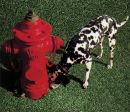Canis Lupus Colorados.gif
Colorado Wolves Reintroduction
Forum rules
- This is a mountaineering forum, so please keep your posts on-topic. Posts do not all have to be related to the 14ers but should at least be mountaineering-related.
- Personal attacks and confrontational behavior will result in removal from the forum at the discretion of the administrators.
- Do not use this forum to advertise, sell photos or other products or promote a commercial website.
- Posts will be removed at the discretion of the site administrator or moderator(s), including: Troll posts, posts pushing political views or religious beliefs, and posts with the purpose of instigating conflict within the forum.
-
cedica

- Posts: 784
- Joined: 6/25/2014
- Trip Reports (0)
Re: Colorado Wolves Reintroduction
You do not have the required permissions to view the files attached to this post.
-
XterraRob

- Posts: 1179
- Joined: 7/20/2015
- 14ers: 42 7
- 13ers: 14
- Trip Reports (4)
Re: Colorado Wolves Reintroduction
Is there a Grizzly Bear Reintroduction effort for Colorado?
RIP - M56
Re-introduce Grizzly Bears into the Colorado Wilderness™
Re-introduce Grizzly Bears into the Colorado Wilderness™
-
nunns
- Posts: 1386
- Joined: 8/17/2018
- 14ers: 43
- 13ers: 5
- Trip Reports (0)
Re: Colorado Wolves Reintroduction
How many people voted in total? Any idea? Just curious.k_fergie wrote: ↑Mon Dec 04, 2023 11:46 amWhat I think Tony is pointing is that the margin was 41k votes. So you could have had a flipped result if just 21k rural voters (a tiny, tiny fraction) voted against it that actually voted for it. He's pointing that even though it skewed rural/urban on the aggregate, you could also "blame" those many thousands of rural voters that did vote yes for reintroduction just as justifiably as "blaming" the thousands of urban voters that voted for it. He's pointing out that many rural voters did vote for it (a minority, but a plenty large one that it could have made a difference), even though they likely conversed/debated/whatnot with their rancher/rural neighbors and will certainly feel similar impacts as those that did ultimately vote against. Why isn't that demographic discussed more than aggregate skew?interloper wrote: ↑Mon Dec 04, 2023 11:07 amIf you look at a map for the results you'll see that this is actually what happened - practically every single rural county aside from the wealthier ski area enclaves voted no. But the population of Colorado skews massively urban, so the rural voters really never had a chance, honestly. Convincing urban voters to vote the other way was how to defeat it.Tony1 wrote: ↑Mon Dec 04, 2023 10:57 am Another way to word "the wolf referendum barely passed due to the Denver/Boulder folks voting yes" is something along the lines of "the wolf referendum barely passed due to a significant minority of rural folks voting yes" as both are true. If rural folks were actually as against it as some people claim, it would probably have failed. Food for thought.
Not to beat a dead horse, but most rural folks in Colorado are against this. Not that it matters anymore, though. I'll get off my soapbox. The wolves are here to stay!
IE, many, many people in rural areas voted for reintroduction and by distilling it down to a 'Denver vs rest of the state narrative', you (not targeting you specifically, just the communal "you") are discounting many, many people that did not vote according to the skew
Sean Nunn
"Thy righteousness is like the great mountains." --Psalms 36:6
Re: Colorado Wolves Reintroduction
3,291,661 total votes. More detail at https://en.wikipedia.org/wiki/2020_Colo ... sition_114
Re: Colorado Wolves Reintroduction
I had not realized just how narrow the margins were in many rural counties. This is a great point, and more nuanced than some of the dominant narratives around wolf reintroduction. Comparing the maps of the release region and the voting percentages by county in the original article, it's striking that many counties in the initial wolf release area either voted for it or against it by narrow margins in the low-to-mid 50s. Montrose and Grand are more skewed but only partially within the release area. While obviously urban areas did dominate the yes vote by sheer population, the truth is more nuanced than the narrative that "we should release wolves where people voted them". Given that some of the more populous counties voted for reintroduction, the vote differential in the release area may be even closer than represented in the per-county percentages. Given that the release area doesn't follow county lines, it's difficult to determine exactly. Whatever the numbers, almost half the voters in the release area favor reintroduction.k_fergie wrote: ↑Mon Dec 04, 2023 11:46 amWhat I think Tony is pointing is that the margin was 41k votes. So you could have had a flipped result if just 21k rural voters (a tiny, tiny fraction) voted against it that actually voted for it. He's pointing that even though it skewed rural/urban on the aggregate, you could also "blame" those many thousands of rural voters that did vote yes for reintroduction just as justifiably as "blaming" the thousands of urban voters that voted for it. He's pointing out that many rural voters did vote for it (a minority, but a plenty large one that it could have made a difference), even though they likely conversed/debated/whatnot with their rancher/rural neighbors and will certainly feel similar impacts as those that did ultimately vote against. Why isn't that demographic discussed more than aggregate skew?interloper wrote: ↑Mon Dec 04, 2023 11:07 amIf you look at a map for the results you'll see that this is actually what happened - practically every single rural county aside from the wealthier ski area enclaves voted no. But the population of Colorado skews massively urban, so the rural voters really never had a chance, honestly. Convincing urban voters to vote the other way was how to defeat it.Tony1 wrote: ↑Mon Dec 04, 2023 10:57 am Another way to word "the wolf referendum barely passed due to the Denver/Boulder folks voting yes" is something along the lines of "the wolf referendum barely passed due to a significant minority of rural folks voting yes" as both are true. If rural folks were actually as against it as some people claim, it would probably have failed. Food for thought.
Not to beat a dead horse, but most rural folks in Colorado are against this. Not that it matters anymore, though. I'll get off my soapbox. The wolves are here to stay!
IE, many, many people in rural areas voted for reintroduction and by distilling it down to a 'Denver vs rest of the state narrative', you (not targeting you specifically, just the communal "you") are discounting many, many people that did not vote according to the skew
Of course, the wolves will inevitably spread.
-
Gulf_Coast_Hiker

- Posts: 200
- Joined: 5/29/2020
- 14ers: 22
- 13ers: 5
- Trip Reports (0)
-
onebyone
- Posts: 637
- Joined: 7/27/2012
- 14ers: 58 1
- Trip Reports (0)
-
onebyone
- Posts: 637
- Joined: 7/27/2012
- 14ers: 58 1
- Trip Reports (0)
Re: Colorado Wolves Reintroduction
Probably a combination of factors. Bears take an incredible amount of fawns. I think both bears and wolf populations have increased there.SkaredShtles wrote: ↑Mon Dec 04, 2023 8:47 amYou sure it's the *wolves* that are responsible for this precipitous decline in the UP deer population?Istoodupthere wrote: ↑Mon Dec 04, 2023 6:45 am The fun is just beginning. Here in Michigan, the wolves are eating all of the once over abundant deer in the UP. So now the UP is losing a ton of revenue due to the lack of hunters. Wolf hunting was banned 9 years ago with most of the votes coming from cities like Detroit. In the past couple years, judges have ruled that the wolves are an endangered species so livestock owners can’t shoot the wolves. If they eat all of their livestock, too bad, there is nothing they can do about it. Sit back and enjoy the news articles in the upcoming decades. You’re in for a wild ride
In Yellowstone, grizzlies take a lot of elk calves. Moose calves as well.
-
Istoodupthere

- Posts: 168
- Joined: 5/5/2022
- 14ers: 49 1
- 13ers: 49 5
- Trip Reports (0)
Re: Colorado Wolves Reintroduction
From about 1990 to 2010 the wolf population in the UP went from 0 to around 650. Yes bears eat fawns. The difference between wolves and bears is that the wolves chase the deer for long distances. The deer depend on their winter yarding areas where they can relax and not expend much energy in the deep snow. The wolves chasing the deer in the winter causes them to lose their fat reserves before the spring thaw and starve if they aren’t eaten.onebyone wrote: ↑Tue Dec 05, 2023 9:56 pmProbably a combination of factors. Bears take an incredible amount of fawns. I think both bears and wolf populations have increased there.SkaredShtles wrote: ↑Mon Dec 04, 2023 8:47 amYou sure it's the *wolves* that are responsible for this precipitous decline in the UP deer population?Istoodupthere wrote: ↑Mon Dec 04, 2023 6:45 am The fun is just beginning. Here in Michigan, the wolves are eating all of the once over abundant deer in the UP. So now the UP is losing a ton of revenue due to the lack of hunters. Wolf hunting was banned 9 years ago with most of the votes coming from cities like Detroit. In the past couple years, judges have ruled that the wolves are an endangered species so livestock owners can’t shoot the wolves. If they eat all of their livestock, too bad, there is nothing they can do about it. Sit back and enjoy the news articles in the upcoming decades. You’re in for a wild ride
In Yellowstone, grizzlies take a lot of elk calves. Moose calves as well.
For the record I’m not anti-wolf. Just giving you an idea of what to expect in the future.
Re: Colorado Wolves Reintroduction
Sounds like wolves are good for ecosystems in aggregate.
https://www.yellowstonepark.com/things- ... ecosystem/
https://www.yellowstonepark.com/things- ... ecosystem/
Traveling light is the only way to fly.
IG: @colorado_invasive
Strava: Brent Herring
IG: @colorado_invasive
Strava: Brent Herring
-
SkaredShtles

- Posts: 2532
- Joined: 5/20/2013
- Trip Reports (0)
Re: Colorado Wolves Reintroduction
Isn't the primary factor in the UP's deer mortality several bad winters, though? Seems that dwarfs the impact of wolves on that population in recent history...Istoodupthere wrote: ↑Wed Dec 06, 2023 6:42 amFrom about 1990 to 2010 the wolf population in the UP went from 0 to around 650. Yes bears eat fawns. The difference between wolves and bears is that the wolves chase the deer for long distances. The deer depend on their winter yarding areas where they can relax and not expend much energy in the deep snow. The wolves chasing the deer in the winter causes them to lose their fat reserves before the spring thaw and starve if they aren’t eaten.onebyone wrote: ↑Tue Dec 05, 2023 9:56 pmProbably a combination of factors. Bears take an incredible amount of fawns. I think both bears and wolf populations have increased there.SkaredShtles wrote: ↑Mon Dec 04, 2023 8:47 am
You sure it's the *wolves* that are responsible for this precipitous decline in the UP deer population?
In Yellowstone, grizzlies take a lot of elk calves. Moose calves as well.
For the record I’m not anti-wolf. Just giving you an idea of what to expect in the future.
-
myfeetrock

- Posts: 665
- Joined: 7/14/2009
- 14ers: 37 1
- 13ers: 12
- Trip Reports (0)
Re: Colorado Wolves Reintroduction
Differences aside, I just want to hear one howl in the middle of a dead calm night while camping in the flat tops. I heard one years ago. Awesome sound!



